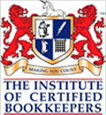ATO launches voice authenticationAustralians can save time on the phone to the ATO. The ATO receives around 8 million calls per year from the community and for about 75 per cent of these calls the ATO need to ask the caller to verify their identity. Australians contacting the ATO by phone will now be given the choice to record a short “voiceprint” that can be used to verify their identity for future calls. This will provide a more secure, and much more convenient, call experience to the ATO. A voiceprint is a digital representation of the sound, rhythm, physical characteristics and patterns in a voice. “In the last fortnight, over 30,000 Australians have already chosen to use our voice verification technology. It is a more efficient and secure service to the community,” Second Commissioner Geoff Leeper said. “For people who call us regularly, voice verification will speed up the authentication process and cut the time they need to spend on the phone to the ATO.” The added layer of voice authentication security will help to deter, prevent and detect identity theft. Further information on the ATO’s voice authentication technology can be found on ato.gov.au.
Fuel Tax Credit Changes From 1 July 2014, the carbon charge was repealed, increasing the rate for many fuels acquired from 1 July 2014 and used off public roads.
- This means a business owner can claim more if they use the fuel in off-road activities.
- A business can no longer claim FTC for non-transport gaseous fuels used in specified agriculture, fishing and forestry activities.
- A business can no longer claim FTC for aviation gasoline or kerosene if it was declared by the Clean Energy Regulator as part of the opt-in scheme. The liquid fuel opt-in scheme ceased on 30 June 2014
Visit the ATO website for Rates from 1 July 2014 Use the ATO Fuel Tax Credit calculator Did You Know?
- A householder can claim FTC if they use fuel to generate electricity.
- NFP organisations that are not registered for GST can claim FTC if they operate emergency vehicles or vessels.
SuperStream Checklist for Employers
The ATO have issued a checklist for employers. This gives employers an overview of the steps they are required to take to become compliant for SuperStream and an approximate time frame in which to take action. The ATO have recently sent a mailout to small business employers about the SuperStream changes. Important Information for Employers
- Employers must provide the minimum data to the super fund or clearing house electronically.
- Ensure payments and data are linked by a unique payment reference number.
- Ensure data and payment is sent on the same day.
- Super funds are required to process standard compliant contributions within 3 days.
- Superannuation funds are obliged to contact employers within 5 days if data is missing or invalid.
- Employers must respond to any requests from a super fund for missing information or queries relating to employee payments within 10 days.
- Funds will have to refund contributions within 20 working days if they cannot be allocated to an employee.
- Checklist for Employers Assess Options
- Ideally, find a solution that will integrate directly with the business’ payroll software. Or activate the software provided solution, for example, Pay Super in MYOB, or Auto Super in Xero, or ClickSuper in Intuit QBO.
- If you use an external payroll provider or your default fund as a clearing house, check with those parties regarding their SuperStream compliance.
- Consider using the Small Business Superannuation Clearing House (SBSCH).
- Start Date
- Any employer that is ready for SuperStream with their software and/or clearing house can start now.
- Employers with 20 or more employees should start now and be ready by 30 June 2015.
- Employers with 19 or fewer employees need to be ready by 30 June 2016.
- Collect New Information if Required
- Compulsory data includes fund’s ABN, fund’s USI or SPIN, and employee TFN.
- Requirements are slightly different for SMSFs. Compulsory data also includes bank account details and electronic service address.
- Update Payroll Records
- Either update your own software or provide details to your external provider, default fund or SBSCH.
- Upgrade Payroll Software
- Major software companies will be making their software SuperStream compliant if they have not already done so. Check with your provider if you are able to upgrade to a compliant version of the software.
- Register With Your Chosen Provider
- You may need to register or connect with your provider if you are using a service new to you, for example, the SBSCH or your default fund.
- You will need to do this ahead of time so that the account is active before you need to make super guarantee payments.
- Trial the System
- Make sure the system you have registered with is working correctly for you. Again, do this ahead of time so that you know all is functioning before you need to make a super payment.
- Make First SuperStream Contribution
- If all the previous steps have been completed, the first payment should be seamless. However, if this process is new to your business, you should dedicate extra time to allow for any unexpected issues as they arise during the process.
- If there are any problems, make sure your super obligations are met on time, then work out the issues with the provider later.
- Refine the Process
After the first payment, refine the process so that it becomes ‘business-as-usual” for those involved in processing the superannuation payments.



